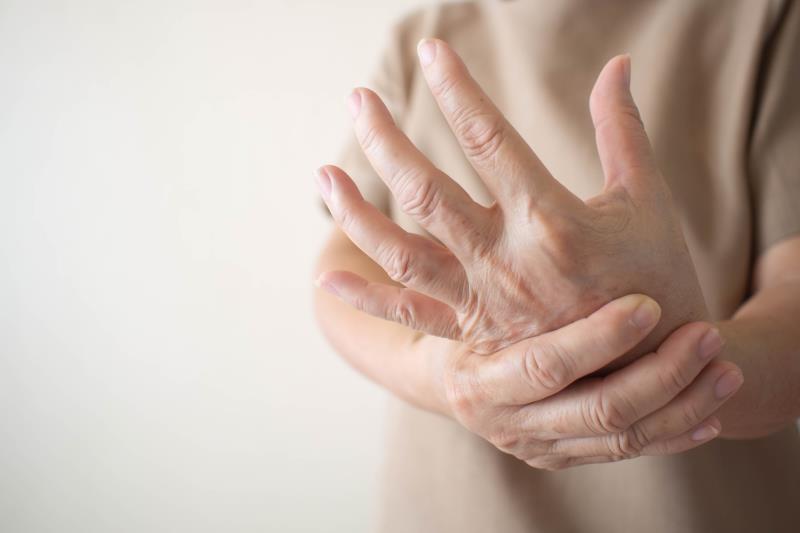
Short-term treatment (6 weeks) with 10 mg prednisolone effectively reduces finger pain and improves function in patients who have painful hand osteoarthritis (OA) coupled with signs of inflammation, the HOPE* study has shown.
“These findings provide clinicians with a new treatment option for a disease that has very few therapeutic options,” the researchers stated. Although NSAIDs** are commonly used to relieve symptoms, the researchers noted that their effect is moderate and limited by safety issues, especially in older people (aged ≥65 years).
“Prednisolone is an inexpensive, widely available drug, providing ample opportunity to directly apply these findings in daily clinical practice,” they added.
In the double-blind trial, 92 patients with symptomatic hand OA and signs of inflammation in their DIP/PIP*** joints were randomized in a 1:1 ratio to receive oral prednisolone 10 mg or placebo once daily for 6 weeks. Subsequently, they underwent a 2-week tapering scheme and were followed up for 6 weeks after stopping study medication. [Lancet 2019;394: 1993-2001]
At 6 weeks, improvement in the primary outcome of finger pain reported on the VAS# was significantly greater in the prednisolone group than the placebo group (mean change, -21.5 vs -5.2; p=0.0007).
Prednisolone also led to consistently better outcomes in key secondary measures of pain and function at week 6, as indicated by improvements in the AUSCAN, FIHOA##, and VAS (pain at thumb base) scores (all p<0.05).
In particular, the proportion of patients who fulfilled the OMERACT-OARSI### responder criteria in the prednisolone group more than doubled those in the placebo group (72 percent vs 33 percent).
Imaging measures also showed signs of structural modification in favour of prednisolone, as evident by a decrease in synovial thickening score on ultrasound (mean, -2.8 vs -0.3; p=0.016) and bone marrow lesions on MRI (mean, -0.2 vs 0.5; p=0.043).
“The large beneficial effect size on pain and function exceeded those of all available therapeutic options in hand OA, and the results showed that local inflammation in hand OA can be modulated,” the researchers pointed out.
Importantly, the incidence of nonserious adverse events (AEs) appeared similar between the two groups (43 vs 43). There was one serious AE in the prednisolone group (myocardial infarction) and four in the placebo group (infected leg haematoma, bowel surgery, atrial fibrillation, and uterine myomas).
“[These findings] provide a clear and effective short-term option for those with hand OA pain that flares up in response to withdrawal of NSAIDs, especially if they have symptoms and signs of inflammation,” wrote Drs Graeme Jones and Tania Winzenberg from the University of Tasmania, Hobart, Australia in a linked commentary. [Lancet 2019;394: 1967-1968]
“If these signs and symptoms were present, we would not see the need to image the joints, unless the clinician has easy access to ultrasound in their clinic, meaning that this treatment approach could be used not only by specialist rheumatologists, but also in patients with more severe disease in primary care,” they suggested.
Nonetheless, the benefits quickly tapered off after withdrawal in the study. Thus, it remains unclear how long should the treatment be given to provide optimal pain relief, or whether repeated courses of prednisolone should be used, noted Jones and Winzenberg.